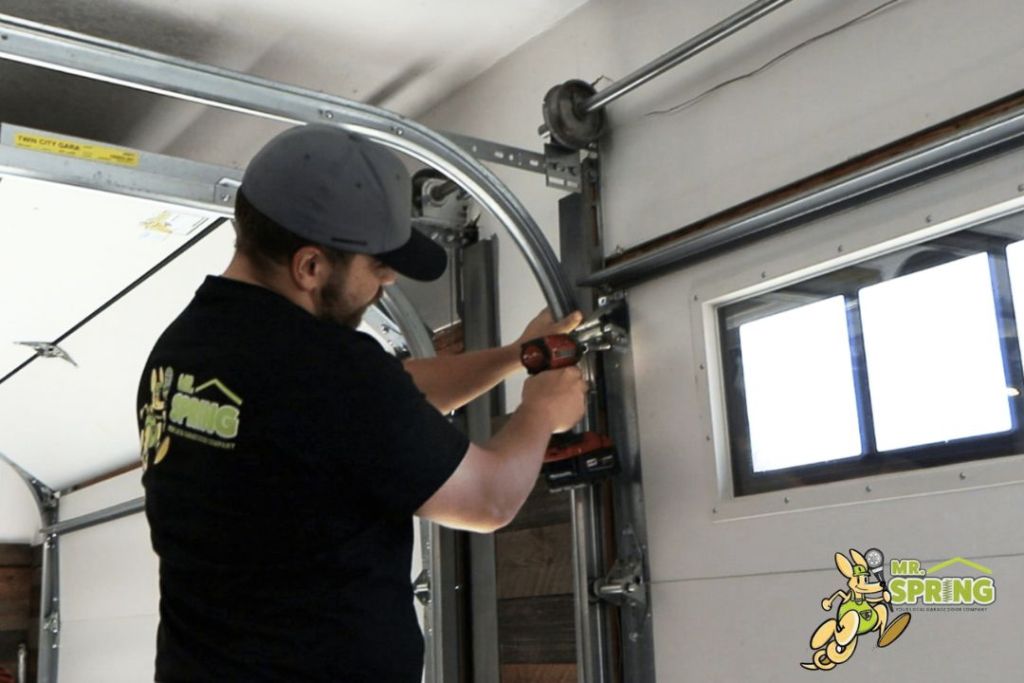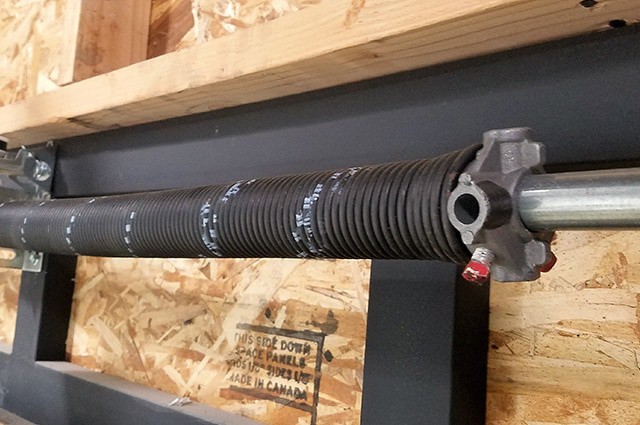When it comes to home maintenance, few things are as crucial yet often overlooked as garage door springs. These unassuming components bear the brunt of your garage door's weight, ensuring smooth operation day in and day out. However, like all mechanical parts, they eventually wear out, leading to the inevitable need for replacement. As of January 2025, homeowners across the United States are increasingly aware of the importance of maintaining their garage doors, but many are caught off guard by the costs associated with spring replacement.
This comprehensive guide delves into the myriad factors that influence garage door spring replacement costs. From the types of springs to labor expenses, geographical considerations, and preventive measures, we'll explore every aspect to help you understand and prepare for this essential home maintenance task.
The Anatomy of Garage Door Spring Costs
Types of Springs and Their Price Points
The first step in understanding replacement costs is recognizing the two primary types of garage door springs: torsion springs and extension springs.

Torsion Springs:
- Cost range: $30 to $100 per spring
- Labor costs: $110 to $200
- Total replacement cost: $140 to $350
Extension Springs:
- Cost range: $20 to $50 per spring
- Labor costs: $100 to $120
- Total replacement cost: $120 to $200
These price ranges reflect the average costs across the United States as of early 2025. However, it's important to note that prices can fluctuate based on various factors, which we'll explore in detail.
Single vs. Double Garage Doors
The number of doors and their size significantly impact the overall cost:
- Single Garage Door: $150 to $350
- Double Garage Door: $200 to $375
Double garage doors typically require thicker wire and higher weight-bearing capacity, which contributes to the increased cost.
Conversion Costs
Sometimes, homeowners opt to convert their spring system from one type to another:
- Converting Extension to Torsion: $200 to $500
- Converting Torsion to Extension: $250 to $500
These conversions can be more expensive due to the additional hardware and labor required.
The Labor Factor: A Significant Portion of the Cost
Labor costs play a substantial role in the overall expense of garage door spring replacement. Here's a breakdown of how labor influences the total cost:

Variation in Labor Rates
Labor costs can vary widely depending on several factors:
- Type of spring being replaced
- Size and weight of the garage door
- Local labor rates
For torsion springs, labor costs typically range from $110 to $250, while extension spring replacement labor costs fall between $100 to $120.
Access and Complexity
The difficulty of accessing the garage or the springs themselves can increase labor costs. If a technician encounters challenges in reaching the work area, it can add time to the job, thereby increasing the labor portion of the bill.
Multiple Door Considerations
Replacing springs for multiple garage doors simultaneously can help minimize labor costs by reducing the number of trips a technician needs to make. However, it's important to note that while labor costs might be optimized, the material costs will increase with the number of springs needed.
Materials Matter: The Impact of Spring Types on Cost
The materials used in garage door springs not only affect their durability but also their replacement costs. Let's examine the common materials and their implications:
Oil Tempered Springs
These springs, made from high-carbon steel, undergo a special heat treatment process. They are the most popular type and come in two classes, with Class 2 being more commonly used in the garage door industry due to its higher tensile range.
Hard Drawn Springs
Produced through a cold drawn process without heat treatment, these springs are often used for extension springs.
Galvanized Springs
Made from hard-drawn wire and coated with a layer of zinc, these springs offer protection against rust and corrosion, making them suitable for harsh environments. While more expensive, they can be a cost-effective choice in the long run due to their extended lifespan.
Square Wire Springs
Used primarily for torsion springs, especially in situations where space is limited or for high-speed rollup doors. The square wire allows for greater energy storage in a smaller area.
The choice of material affects both the initial cost and the long-term durability of the garage door springs. While oil tempered springs are the most common and generally more affordable, galvanized springs offer additional protection against corrosion, which can impact the overall replacement cost but potentially save money over time.
Geographical Considerations: How Location Affects Price
Your geographical location plays a significant role in determining the cost of garage door spring replacement. Here's how:
Urban vs. Rural Pricing
Urban areas generally have higher labor costs compared to suburban or rural areas. This is primarily due to the higher cost of living in cities, which translates to higher rates for services like garage door repairs.
Supply and Demand Dynamics
The availability of garage door contractors in a given region affects pricing. Areas with fewer contractors may have higher prices due to lower competition, while areas with many contractors may offer more competitive pricing.
Travel Fees
For rural or distant locations, homeowners may need to pay an extra trip fee because technicians have to travel longer distances to perform the repair. This additional cost is not typically incurred in urban or suburban areas where technicians are more readily available.
Understanding these geographical factors can help you better anticipate and budget for garage door spring replacement costs in your area.
Additional Costs to Consider
When budgeting for garage door spring replacement, it's crucial to account for potential additional costs:
Hardware and Materials
Beyond the springs themselves, you may need to purchase new brackets and hardware to ensure proper door operation. These additional materials can cost between $60 to $150 for a set of two springs, which is common for a double garage door.
Emergency Service Fees
If you require replacement outside of regular business hours or on an emergency basis, you may incur additional fees. These can vary but generally increase the overall cost due to the urgency and potentially longer travel times for the technician.
Multiple Door Adjustments
If you have multiple garage doors, the cost will increase due to the need for more springs and potentially more labor time. For example, replacing springs for two doors can cost between $275 and $425, and for three doors, it can range from $350 to $700.
Accessibility Challenges
If the garage or the spring itself is difficult to access, this can increase labor costs as it requires more time and effort from the technician.
Early Detection: The Key to Cost Savings
Recognizing the signs of a failing garage door spring early can save you money in the long run. Here are some indicators to watch for:

- Unusual Noises: Squeaking, grinding, or loud sounds when opening or closing the door.
- Visible Damage: Rust, breaks, or gaps in the spring (a 2-inch gap is a common sign of a broken spring).
- Partial or Slow Opening: The door only opens partially or moves too slowly.
- Jerking or Uneven Movement: The door jerks when opening or closing, or appears crooked.
- Increased Motor Strain: The motor works harder than usual to open or close the door.
Early detection and replacement can prevent more extensive and costly repairs down the line. For instance, a simple spring replacement typically costs between $120 to $350, while delaying could lead to motor or cable damage, potentially adding $80 to $500 to the overall cost.
Preventive Measures to Extend Spring Lifespan
Taking proactive steps can significantly extend the life of your garage door springs and reduce long-term costs:
- Regular Maintenance: Apply silicone or lithium-based lubricants every few months to prevent rust and ensure smooth operation.
- Periodic Inspections: Schedule regular visual inspections to check for signs of wear, rust, or damage.
- Proper Balance: Ensure your garage door is correctly balanced to prevent uneven strain on the springs.
- Reduced Usage: Minimize the number of times you open and close the garage door daily. Reducing usage from eight times a day to four can potentially increase spring lifespan from three years to seven years.
- Environmental Protection: Keep corrosive substances like road salt away from the springs.
- Quality Materials: Opt for high-quality springs made from materials like oil-tempered steel for better durability and rust resistance.
- Professional Installation: Ensure springs are correctly installed and matched to your specific door's requirements.
By implementing these preventive measures, you can extend the typical lifespan of torsion springs (7-12 years) and extension springs (7-10 years) even further, potentially saving hundreds of dollars in premature replacement costs.
Conclusion
Understanding the factors that influence garage door spring replacement costs empowers homeowners to make informed decisions and potentially save money in the long run. From the type of springs and labor costs to geographical considerations and preventive measures, each element plays a crucial role in determining the final price tag.
As we move through 2025, the importance of maintaining our homes' critical systems, including garage doors, becomes increasingly apparent. By staying informed about the costs associated with garage door spring replacement and taking proactive steps to maintain these essential components, homeowners can ensure the safety, functionality, and longevity of their garage doors while managing their home maintenance budgets effectively.
Remember, while it may be tempting to attempt DIY repairs to save money, garage door spring replacement can be dangerous and is best left to professionals. The cost of professional service is a small price to pay for the safety and peace of mind it provides. By understanding the factors that influence these costs, you can approach the process with confidence, knowing you're making the best decision for your home and your wallet.
